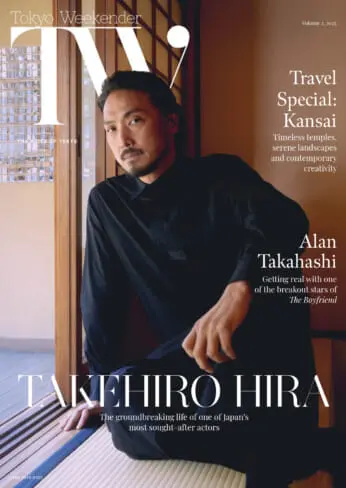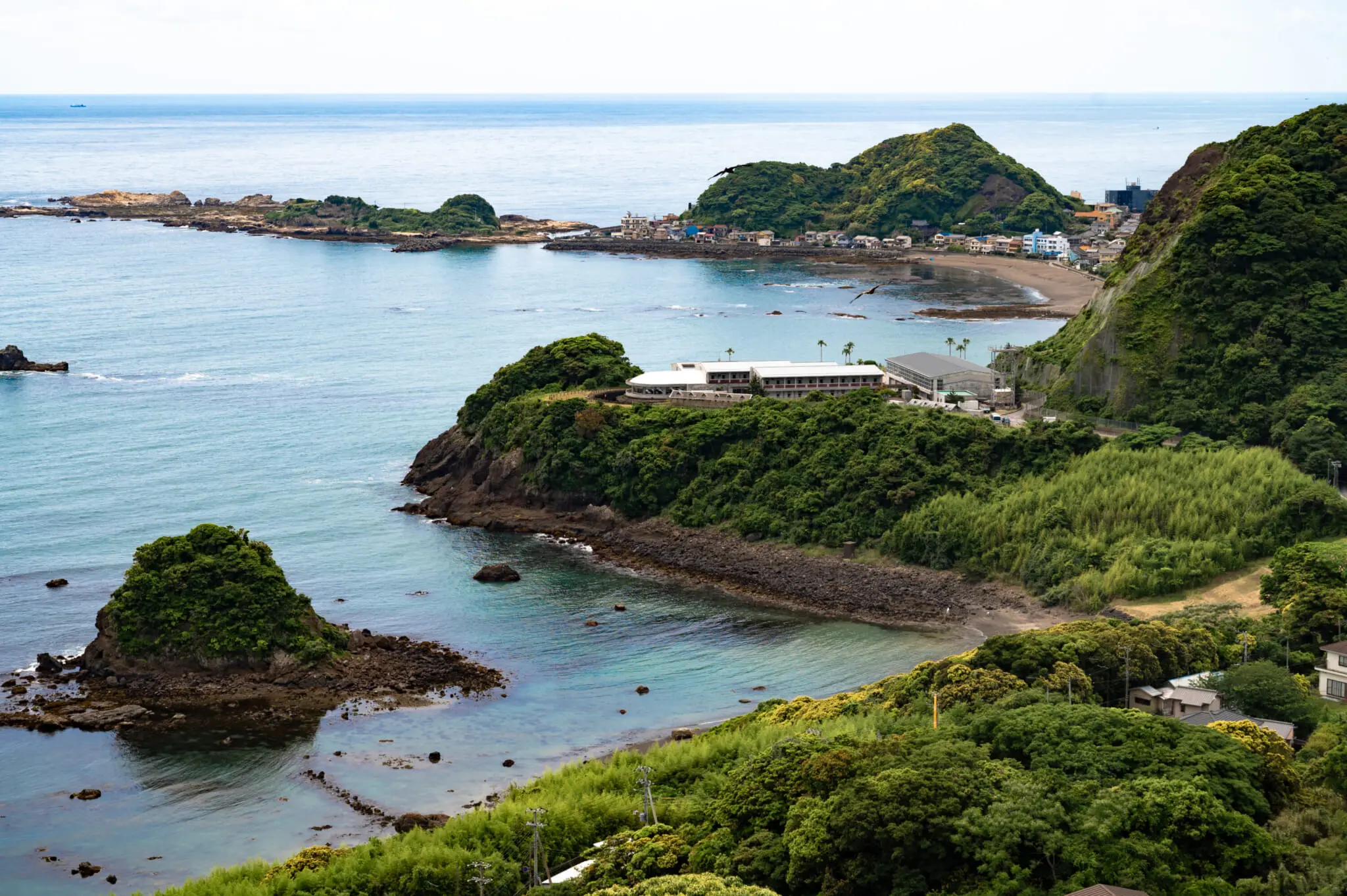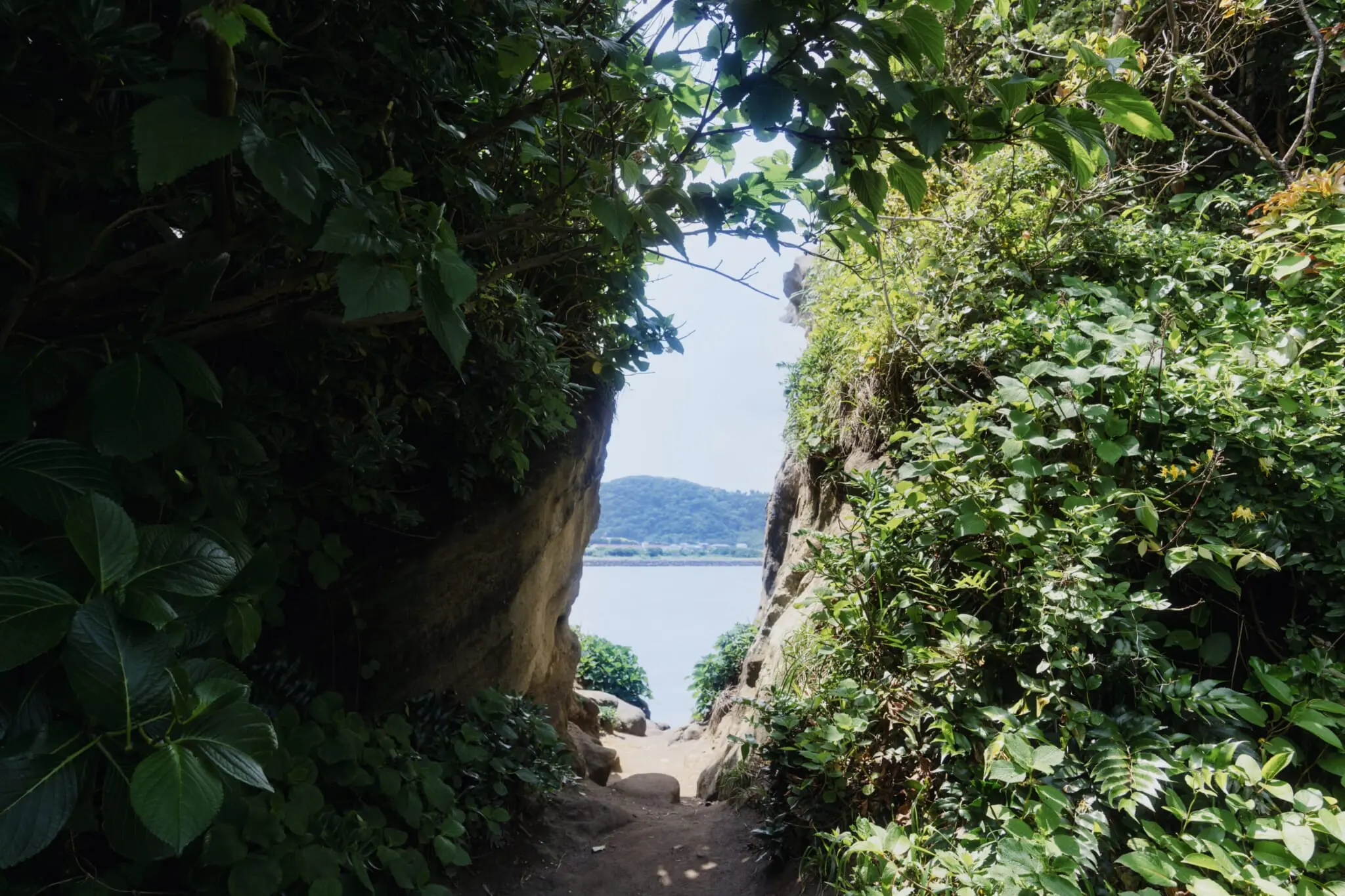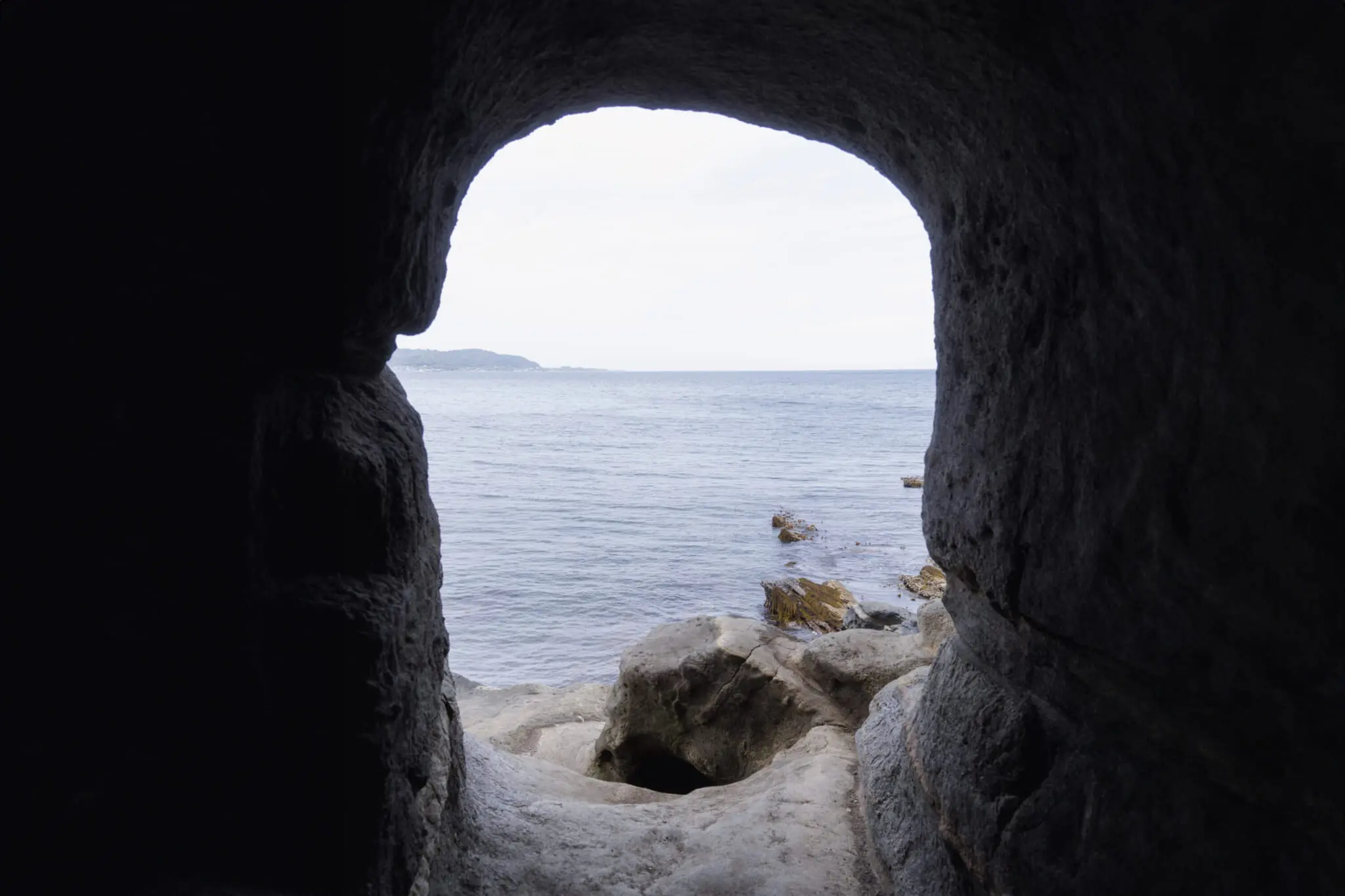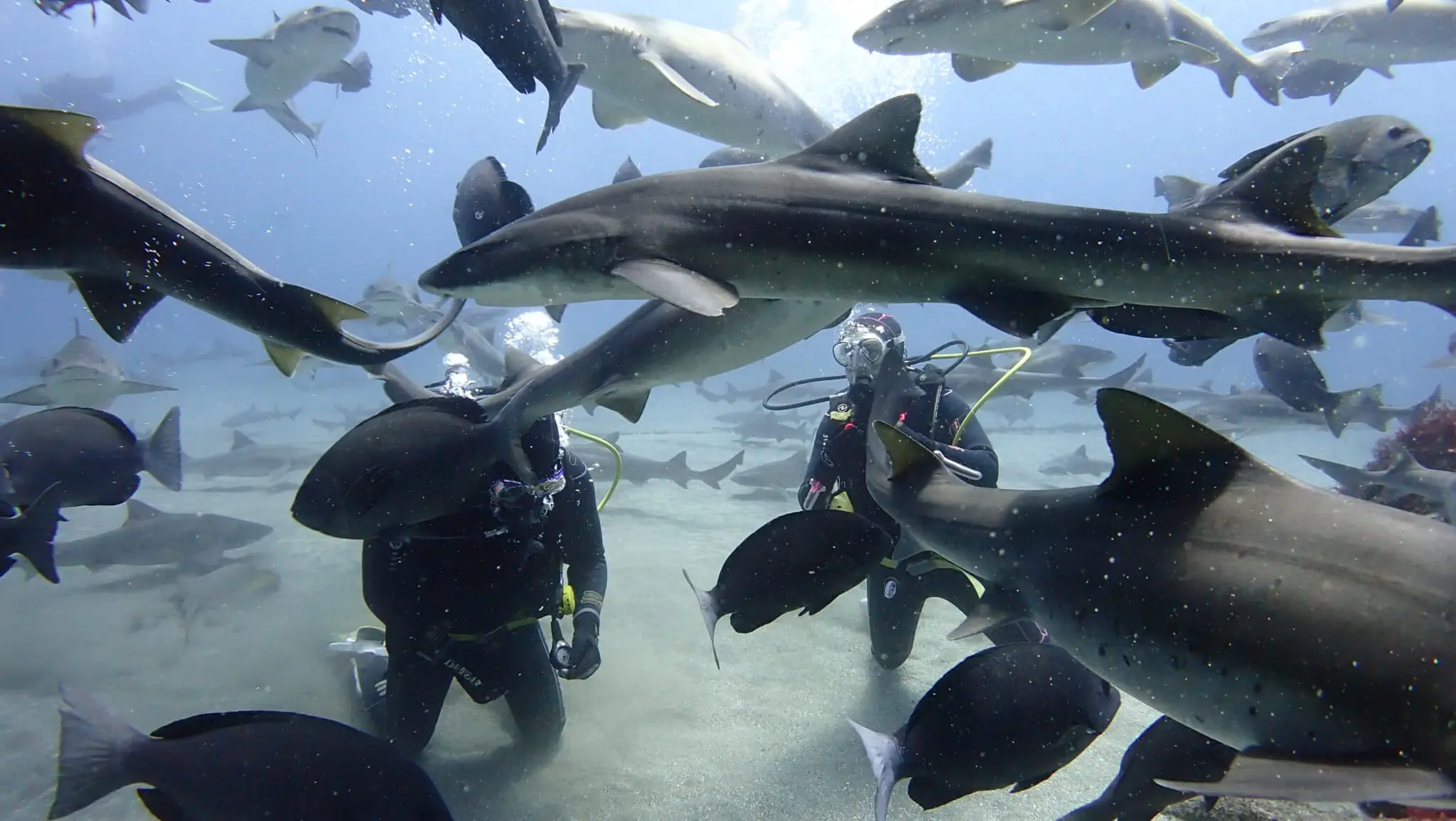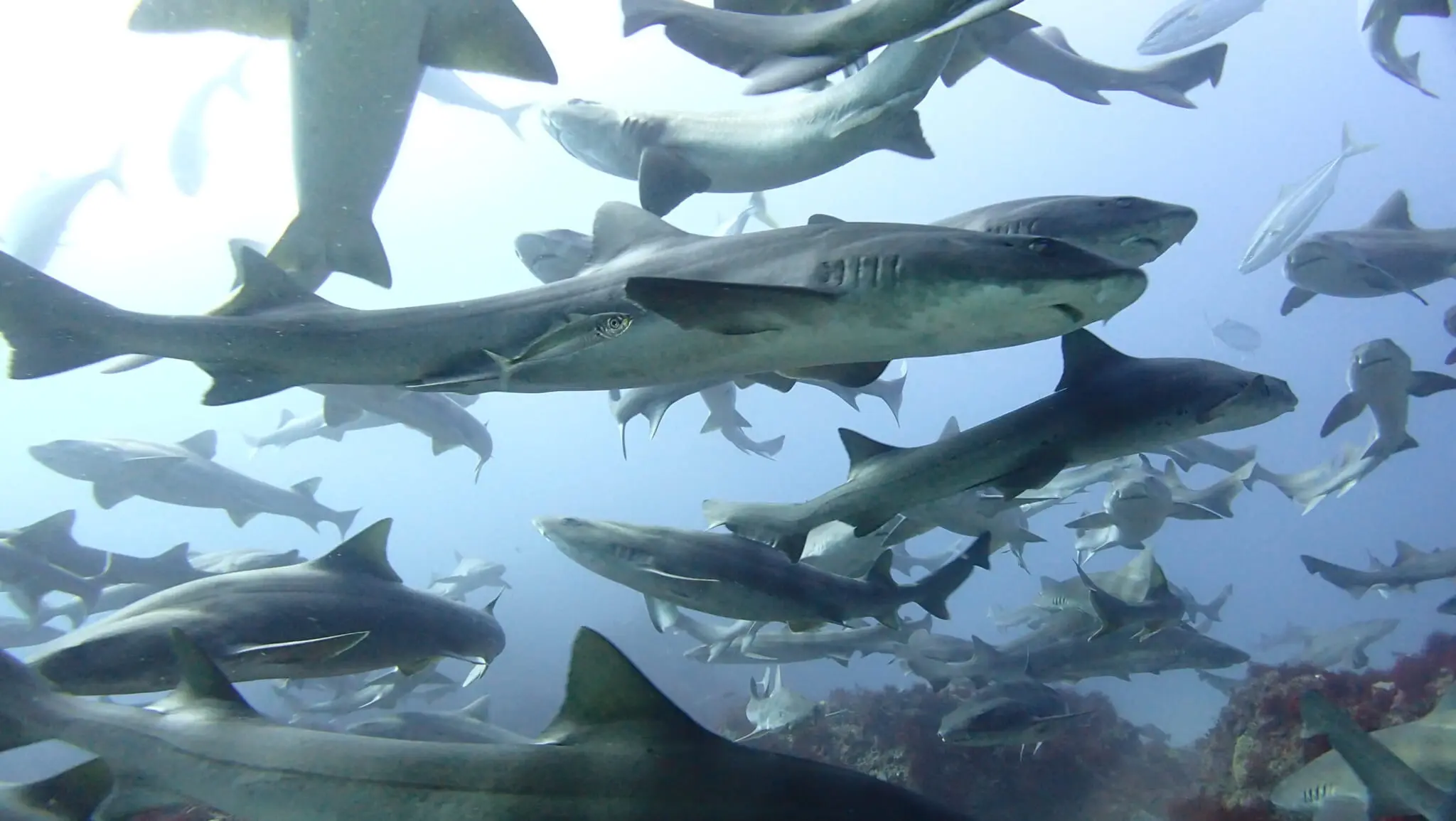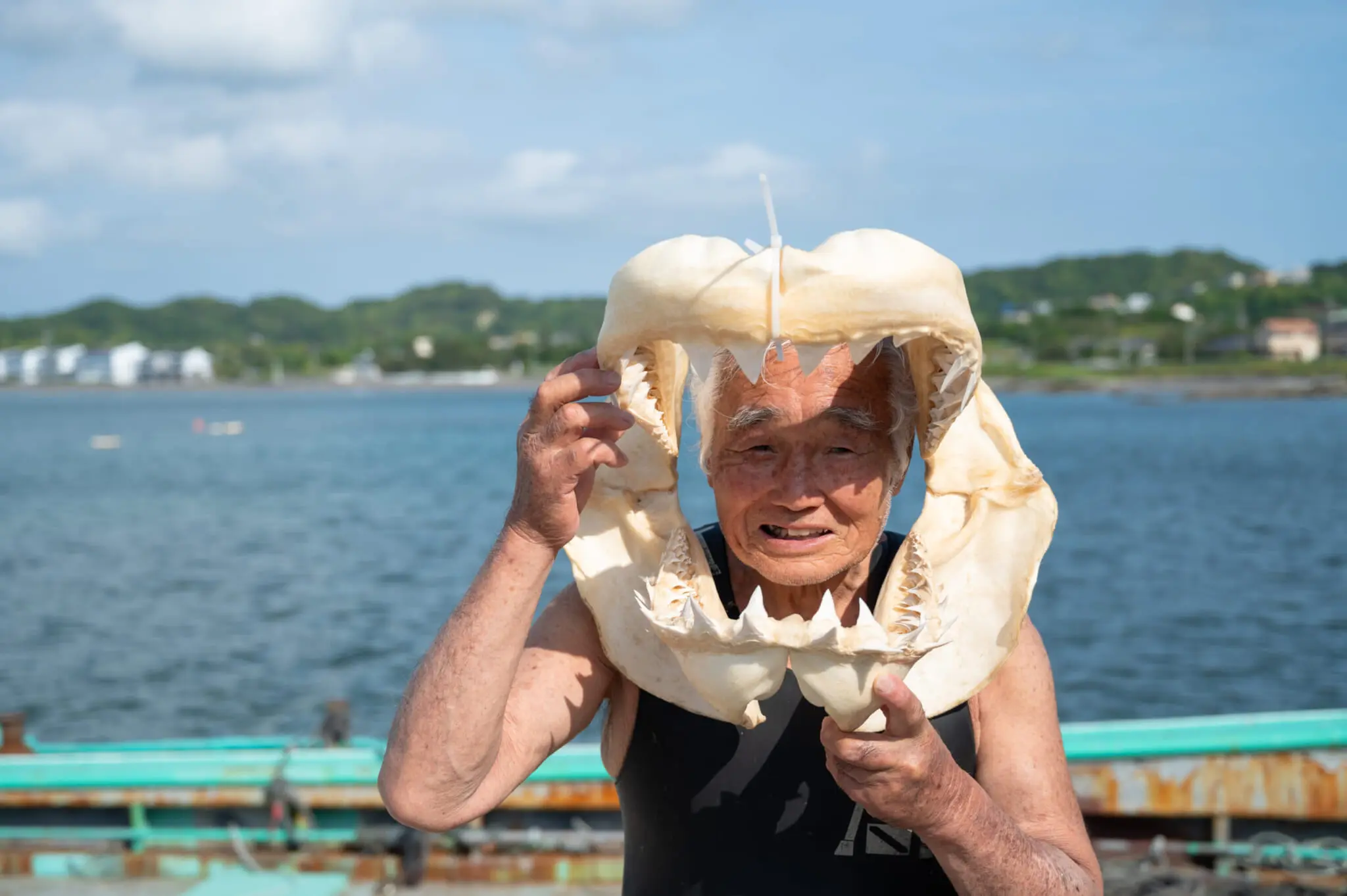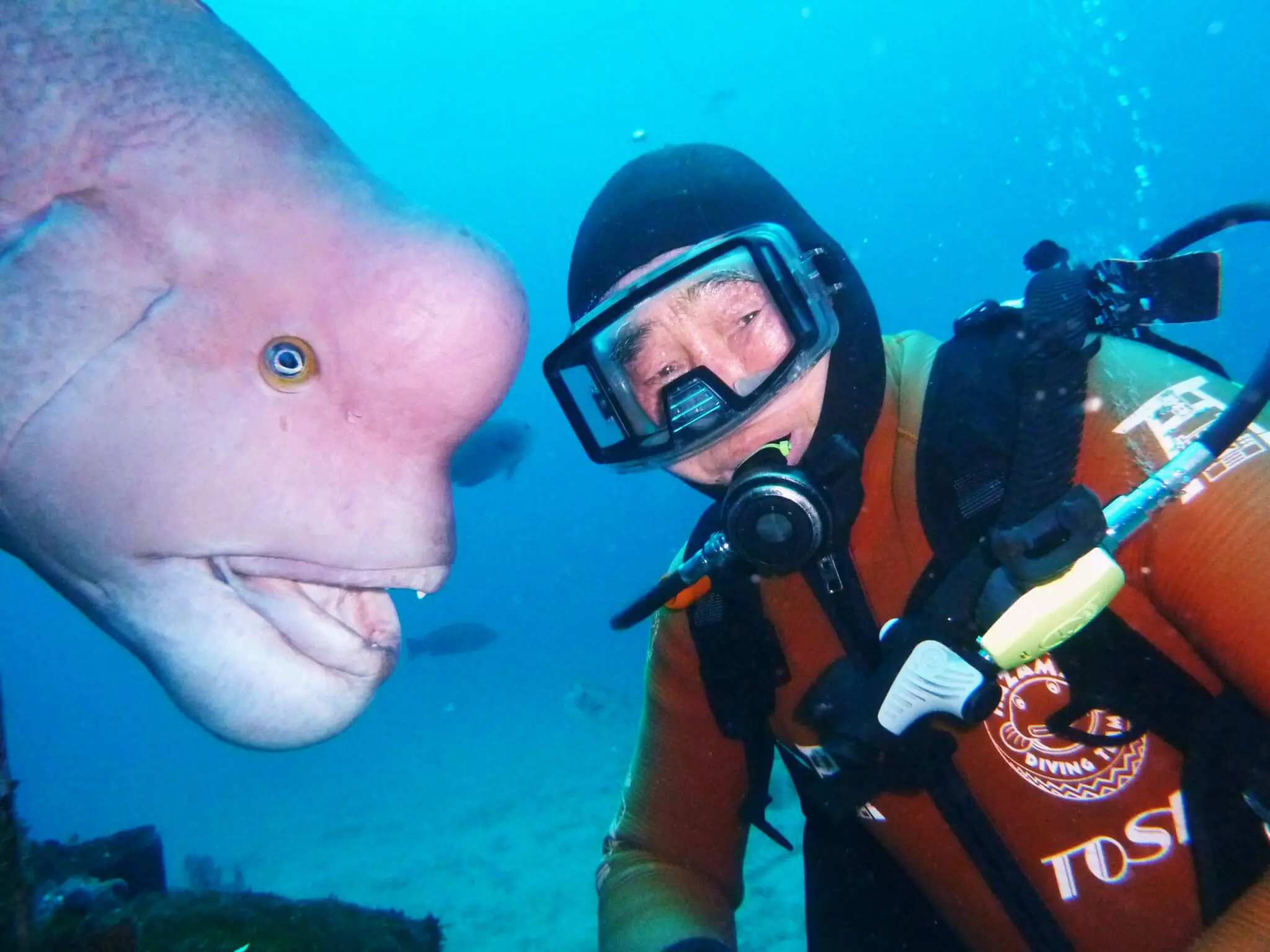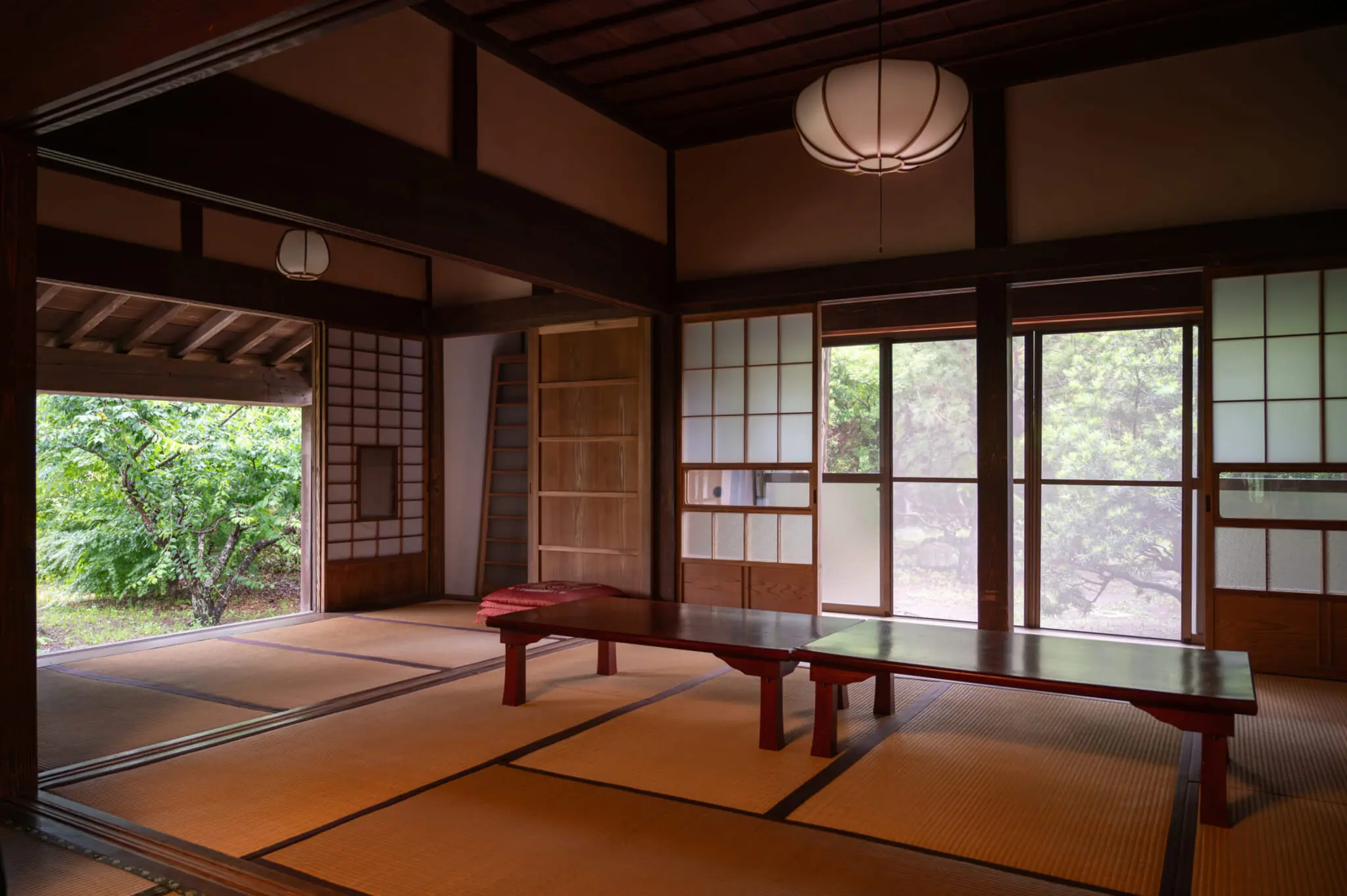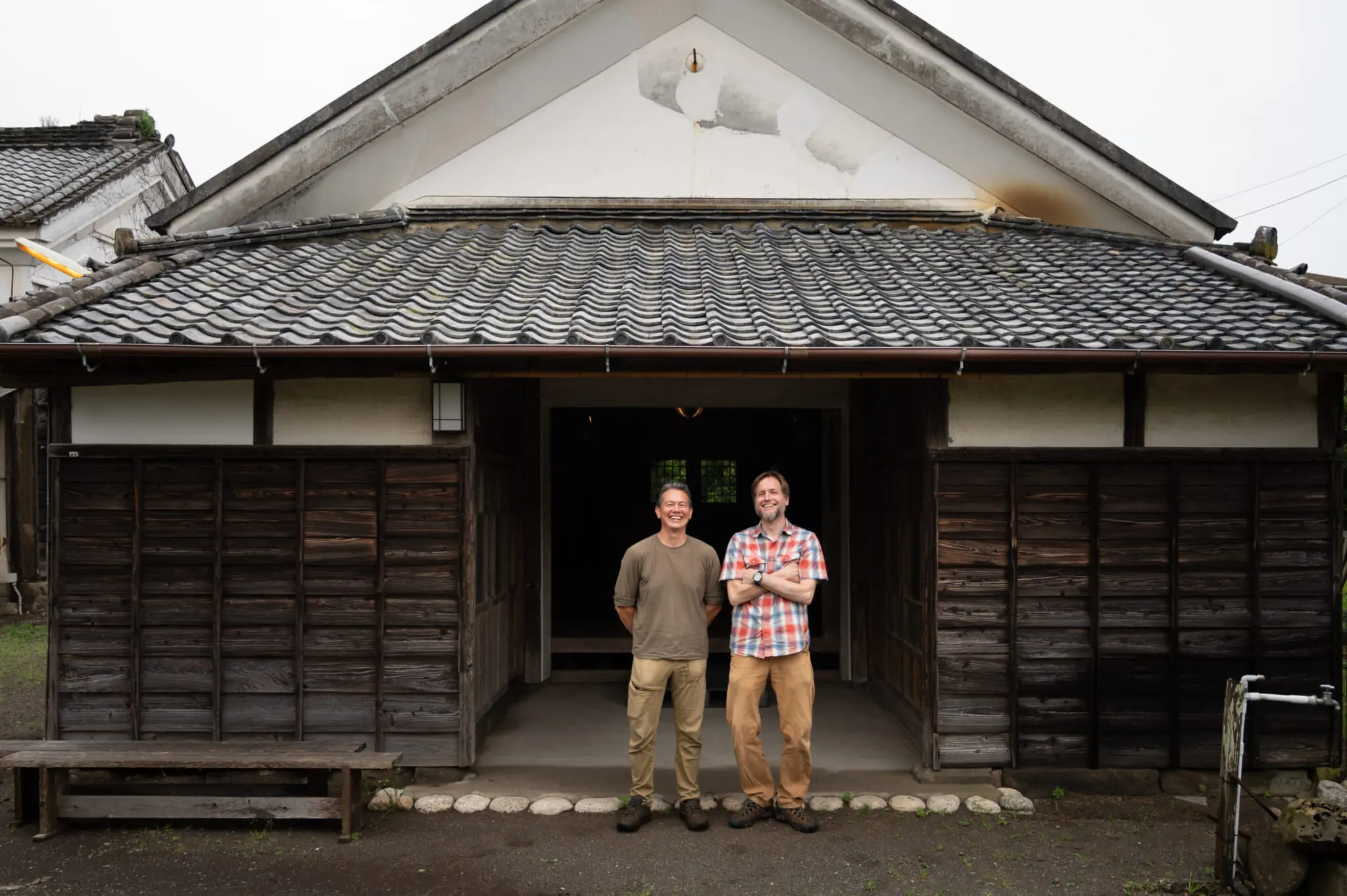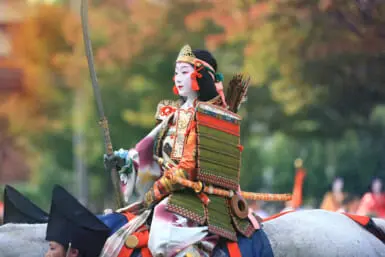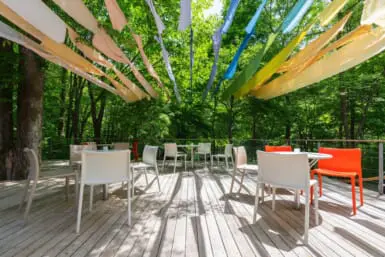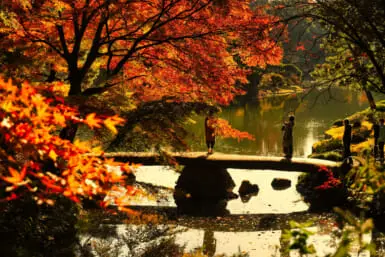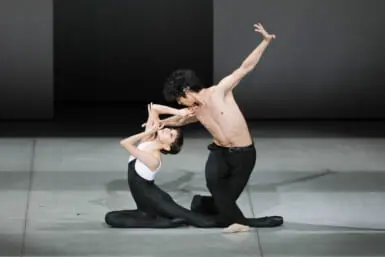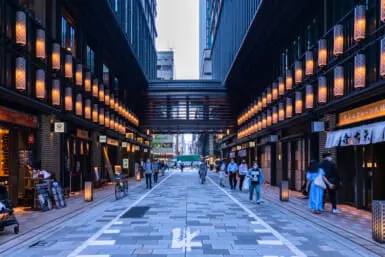Situated by the southern tip of Chiba Prefecture’s Boso Peninsula, the Awa region is a breathtaking enclave that gazes out onto the Pacific Ocean. While its crashing waves and coral reefs are popular with surfers and divers, Awa also boasts landlocked natural attractions such as Mount Nokogiri, with its stunning panoramic views, and the serene Tateyama Wild Bird Sanctuary, a haven for birdwatchers.
Historically and spiritually significant, Awa is also the birthplace of Nichiren, the founder of Nichiren Buddhism, making it a perfect esoteric retreat. Here, the natural splendor blends seamlessly with profound spiritual heritage, offering a tranquil escape that captivates the soul and rejuvenates the spirit.
A trip to Awa will bring you in close contact with nature — there’s an abundance of beautiful oceanside activities — and with a vibrant local culture. Here are some of the best things to do and see in the area:
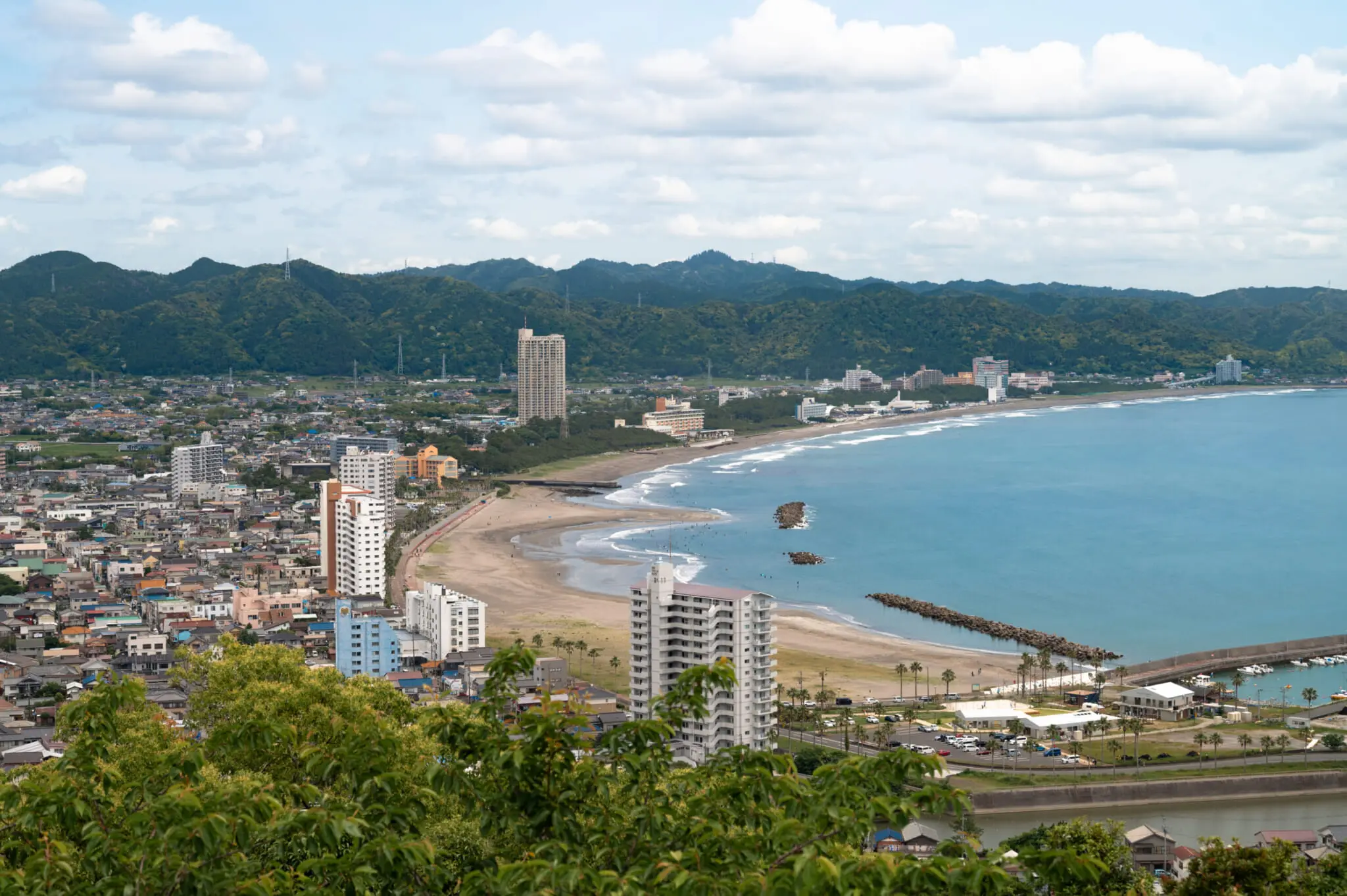
Uomizuka Observation Deck: A Short Hike to a Dazzling Ocean View
Located on the eastern edge of the Mineoka Mountain District, within Issenba Park, the Uomizuka Observation Deck offers a breathtaking panorama from its lofty perch approximately 110 meters above sea level. Its name is a homage to the fishermen who once scaled the mountain’s heights to spot schools of fish off its shores — “uomizuka” means “fish-watching mound” — and these days, too, visitors are treated to sweeping vistas across the endless ocean and the bustling cityscape of Kamogawa.
The short journey to the lookout point is a scenic excursion, winding through dense forests. At the pinnacle awaits a statue of Gyofu, the observatory’s symbol which was crafted by the skilled hands of local sculptor Ko Hasegawa. Today, Uomizuka stands as a cherished sanctuary for couples and romantics, who visit the goddess statue to immortalize their love by affixing symbolic padlocks to standalone fences dotting the landscape.
Okinoshima Park: A Lush, Uninhabited Island Accessible by Sandbar
Situated within Minami-Boso Quasi-National Park, Okinoshima Park stands as a testament to Chiba’s natural beauty. At its heart lies a 200-meter sandbar connecting the mainland to a small uninhabited island. This sandbar was originally covered by the ocean, but seismic activity over centuries elevated it closer to the water’s surface, and sediment gradually built up over time; now, thanks to it, visitors can explore the island without entering the water.
The island boasts lush forests with mystical-feeling trees, rich with diverse plant life and unique rock formations, composed of uplifted strata formed by tectonic plate movements. Okinoshima Beach, located at the northernmost limit of the Pacific Ocean’s coral bed, offers excellent snorkeling opportunities in its calm, warm waters during the summer.
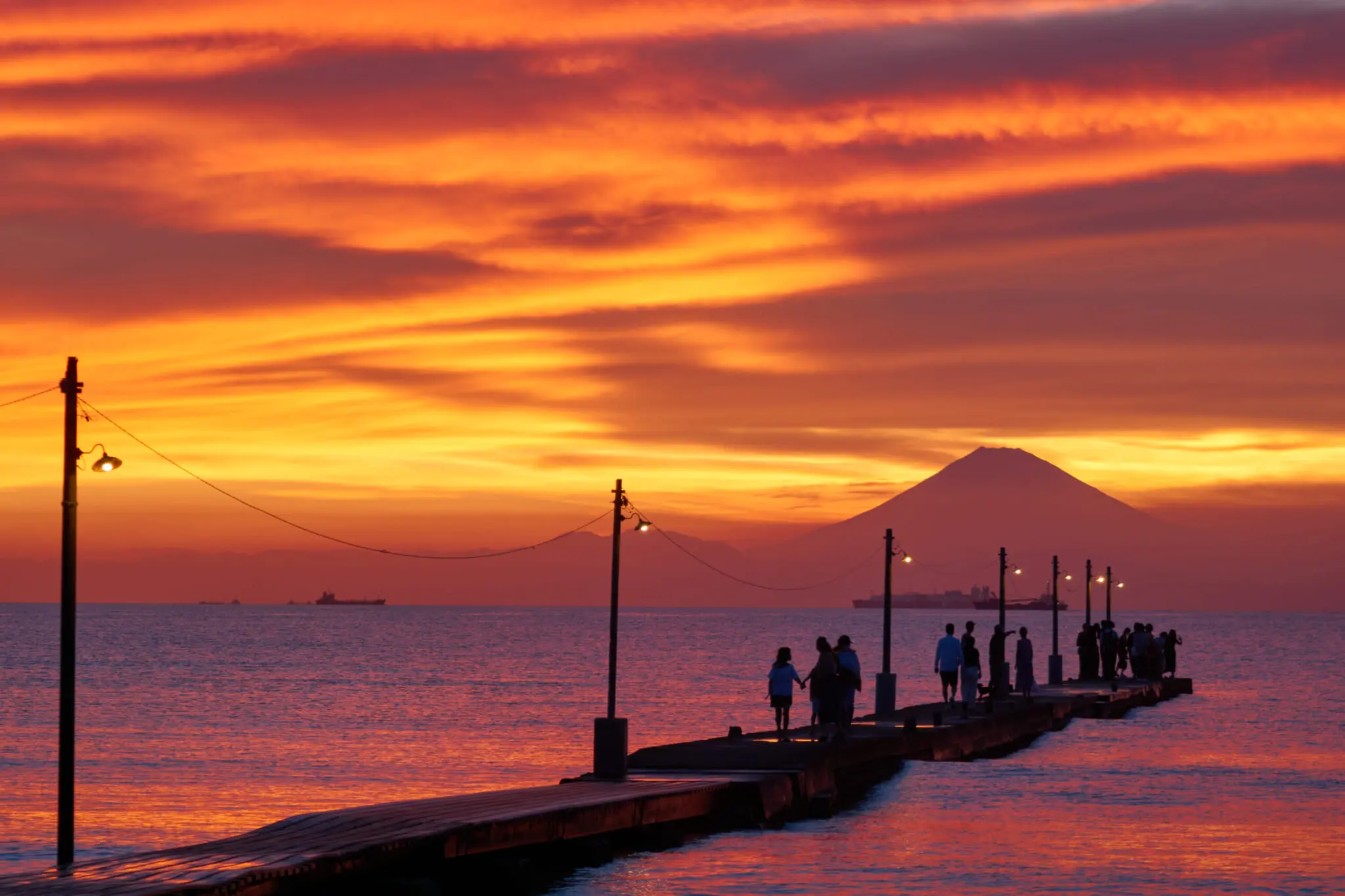
Haraoka Pier: A Pier With Breathtaking Mount Fuji Views
Haraoka Pier, also known as Okamoto Pier, gives lucky visitors a view of Mount Fuji in the distance. As one of Japan’s few wooden piers, it has become a popular spot for photographers, filmmakers and sunset enthusiasts alike. Despite its modest size, the pier has an alluring, tranquil atmosphere that draws locals and visitors seeking respite from the bustling roads nearby. Accessible by a narrow road, it provides a perfect setting to unwind, take in the breathtaking scenery and bask in the calming ocean breeze.
Diving Service Bommie: A Chance To Swim With Sharks
Dive deeper into the ocean’s depths and swim alongside sharks at Ito Diving Service Bommie. The adrenaline-pumping “Shark Scramble” sends divers into the midst of a diverse population of sea creatures, including, potentially, hundreds of sharks, who gather frequently thanks to a feeding initiative headed by Bommie CEO Kan Shiota. The project started in 2009 as a way to draw sharks away from fishermen’s nets, protecting both the catches and the sharks themselves. This unique encounter is reserved for experienced divers, as strong currents in the area can present challenges.
Note: Due to Bommie’s increasing popularity, the diving shop advises international visitors to book dives on weekdays or contact alternative diving services. Recommendations are available on their website.
In the heart of the Awa region lies a community of remarkable individuals whose stories illuminate the essence of this vibrant locale. Below, a list of exciting things to do in Awa, pioneered by innovative locals who are shaping the landscape through crafts, creativity and education.
Hasama Underwater Park: A Great Dive Spot Run By a Local Celebrity
Hiroyuki Arakawa’s unlikely friendship with Yoriko, an Asian sheepshead wrasse, went viral in 2017 when it was featured by CNN’s Great Big Story. The video captured Arakawa giving Yoriko a gentle kiss to the forehead and enchanted audiences worldwide.
Originally from Yokosuka in Kanagawa Prefecture, Arakawa has a lifelong passion for marine life, which drew him to the Tateyama area, where he started the Hasama Underwater Park in 1982. The park, which sits on the border between Tokyo Bay and the Pacific Ocean, is renowned for its diverse marine ecosystem and offers rare glimpses of species like the ocean sunfish and whale sharks. The area is mostly sheltered from strong waves and easy to reach, making it accessible to less experienced divers.
At the heart of the park is Arakawa’s bond with Yoriko, who has transformed from female to male over the years — something Asian sheepshead wrasse are prone to do depending on environmental factors. Thanks to Arakawa’s care, Yoriko has surpassed the typical lifespan for the species, becoming a beloved fixture in his life. Their relationship is so enduring that Arakawa’s daughter humorously refers to Yoriko as his wife.
Adding depth to the experience is the underwater shrine, a branch shrine of Tateyama city’s Sunosaki Shrine, maintained by Arakawa himself. As an ordained shrine official, he conducts rituals twice a month, honoring those lost at sea and preserving the shrine’s sanctity. Though the 86-year-old diver admits it’s tough, he shows no signs of stopping soon. For those who want to follow along with his adventures while staying on land, Arakawa broadcasts his visits to the underwater sanctuary — in full Shinto garb — as well as other underwater adventures daily on his Facebook page.
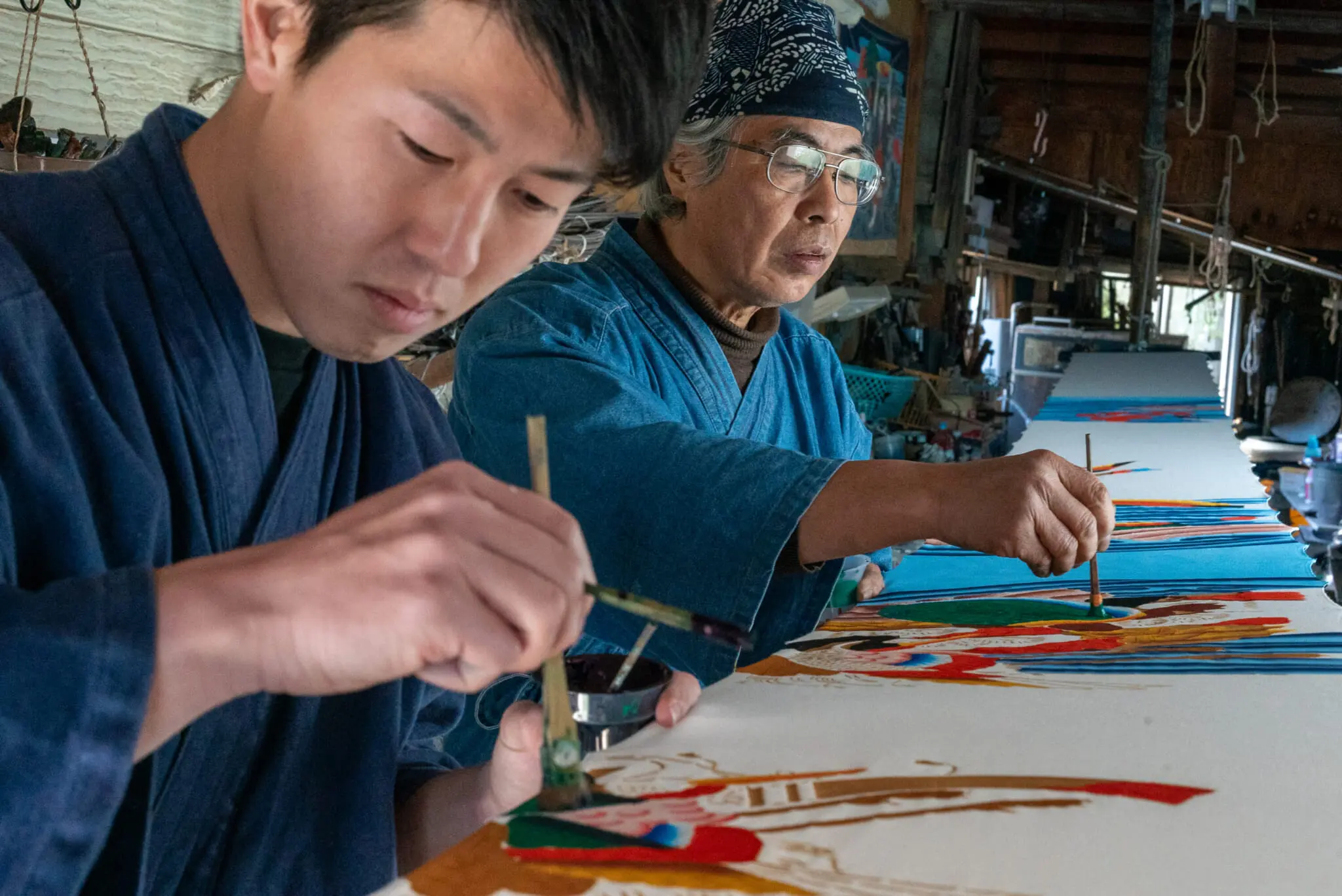
Maiwai Suzusen: An Atelier Specializing in Traditional Garment Making
Riki Suzuki is a textile and dye artisan at Maiwai Suzusen, a family-run atelier in Kamogawa, specializing in the traditional craft of maiwai garment making. He is the fourth generation in a line of craftsmen dedicated to this art form, which dates back to the Edo period. Maiwai, originally a celebratory kimono for fishermen, are characterized by their vibrant, hand-painted designs on indigo-dyed cotton fabric, often depicting auspicious symbols and folklore.
Suzuki initially didn’t intend to join the family business, but a turning point came when he saw his grandfather’s work in an exhibit in California. This experience led him to embrace the craft, recognizing its significance and his role in preserving it. Suzuki’s training involved learning by observing his father, Kosuke, who is a maiwai master with over 40 years of experience.
The creation of a maiwai involves a meticulous process: starting with the design, drafting on washi paper, carving patterns and dyeing with natural pigments. Each garment takes two to three months to complete. Despite maiwai’s decline in popularity since the 1950s, Suzuki strives to keep the regional tradition alive by creating both traditional garments and modern, experimental pieces. Keen-eyed visitors will spot his work displayed in places like the primary dining space of Kamogawakan, a local ryokan. He also hosts workshops together with his father to educate and engage the public in this cultural heritage.
SupernaturalDeluxe: A Community Center Fusing Art, Technology and Education
Phil Cashman and Mike Kubeck are embarking on an ambitious endeavor in Kamogawa, harnessing the potential of a registered tangible cultural property to create a dynamic community space. Their project is named SupernaturalDeluxe as a nod to and extension of the legendary art and creative space Nishi-Azabu SuperDeluxe that thrived for almost 20 years, holding live events every night. SupernaturalDeluxe is not merely about renovation; it’s a fusion of art, technology and community engagement.
Reflecting on their journey, Cashman and Kubeck emphasize the project’s evolution and the crucial role of community input in shaping its direction. As Kubeck puts it: “I guess that part of you wins over, right? The part that wants to see places like this be somehow revived and turned into amazing spaces where communities can grow.”
Their endeavor is not isolated; it’s part of a broader trend in Kamogawa and the Awa region. The area is attracting a diverse array of individuals passionate about various fields, from food to education. As Cashman observes, “Kamogawa is attracting some really interesting, cool people from all over the place doing quite meaningful work around things like food, agriculture, education, community. So there’s something attractive to those people about this place. And it’s probably a lot to do with the land itself, but also the people that are here.” This influx of talent is reshaping the local landscape, with newcomers assuming leadership roles and infusing fresh perspectives into the community.
With SupernaturalDeluxe, Cashman and Kubeck aim to revitalize a registered cultural property in Chiba, using it as an expansive backdrop to bring together diverse disciplines and art forms, including music, food, agriculture, environmentalism and more. In essence, their project is a testament to the transformative power of community-driven initiatives.
Learn more about Chiba’s Awa region and what it has to offer here.
